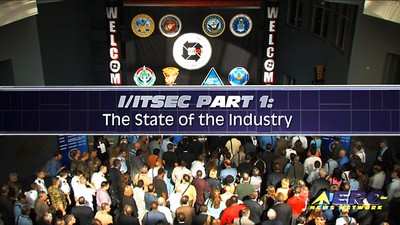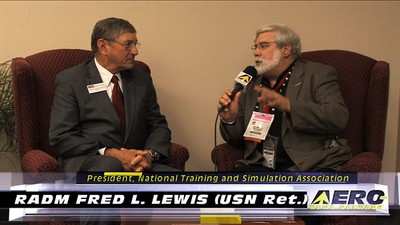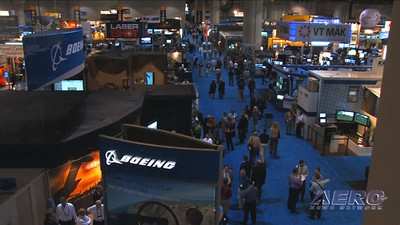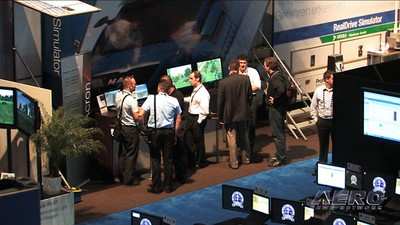Thu, Jan 13, 2011
One of the most truly fascinating events we cover each year is
the annual I/ITSEC event in central Florida. Known more formally as
the Interservice/Industry Training, Simulation and Education
Conference, 'I/ITSEC' promotes cooperation among the Armed
Services, Industry, Academia and various Government agencies in
pursuit of improved training and education programs, identification
of common training issues and development of multiservice
programs.

Initiated in 1966 as the Naval Training Device Center/Industry
Conference, the conference has evolved and expanded through
increased participation by the Army, Air Force, Marine Corps, Coast
Guard, and Industry. In 1979 it became known as the
Interservice/Industry Training Equipment Conference. The Services
have steadily evolved toward a total systems philosophy in the
acquisition of training equipment and training delivery systems. In
1986 the Conference name was further refined to the
Interservice/Industry Training Systems Conference (I/ITSC) to
recognize the increased importance of Manpower, Personnel, and
Training aspects in the systems acquisition process.

In 1992 the name was further changed to the
Interservice/Industry Training Systems and Education Conference
(I/ITSEC) to reflect the consolidation of the Manpower and Training
Committee (MTC) and the Technology and Innovations in Training and
Education (TITE) Conference with I/ITSEC. This change emphasizes
the importance of education and the man-machine interface in
meeting force-training requirements through simulation training. In
1997, to reflect continued growth and changes in the industry, the
conference name was refined to the Interservice/Industry Training,
Simulation and Education Conference (I/ITSEC).

ANN was fortunate enough to score an intriguing and insightful
interview with the President of the National Training and
Simulation Association, RADM Fred Lewis (USN-Ret) about the
military simulation industry and the critical issues that may
determine its future. Admiral Lewis is a man who understands the
value of simulation based on years of hard experience in the real
world. Lewis graduated from the U.S. Naval Academy in 1962 and was
designated a naval aviator in November 1963.

After an initial tour of duty as a flight instructor, he trained
in the F-4 Phantom and participated in numerous operational
deployments to the Atlantic and Pacific and twice deployed to the
Gulf of Tonkin for combat operations over North Vietnam.
Subsequently, he attended the U.S. Naval Test Pilot School and led
the stand-up of the Atlantic Fleet’s F-14 FRS. During a 33
year career, he accumulated over 6,500 accident-free flying hours
in tactical aircraft and over 1,200 carrier arrested landings.
More News
Circle To Runway (Runway Number) Used by ATC to inform the pilot that he/she must circle to land because the runway in use is other than the runway aligned with the instrument appr>[...]
Aero Linx: National Aviation Safety Foundation (NASF) The National Aviation Safety Foundation is a support group whose objective is to enhance aviation safety through educational p>[...]
At Altitude Of About 250-300 Ft Agl, The Airplane Experienced A Total Loss Of Engine Power On November 6, 2024, at 1600 central standard time, a De Havilland DHC-1, N420TD, was inv>[...]
From 2009 (YouTube Edition): Three Hour Flight Was 'Flawless' -- At Least, Until Mother Nature Intervened For anyone who loves the aviation business, this was a VERY good day. Afte>[...]
Also: AMA Names Tyler Dobbs, More Falcon 9 Ops, Firefly Launch Unsuccessful, Autonomous F-16s The Air Force has begun ground testing a future uncrewed jet design in a milestone tow>[...]
 ANN's Daily Aero-Term (05.05.25): Circle To Runway (Runway Number)
ANN's Daily Aero-Term (05.05.25): Circle To Runway (Runway Number) ANN's Daily Aero-Linx (05.05.25)
ANN's Daily Aero-Linx (05.05.25) NTSB Prelim: De Havilland DHC-1
NTSB Prelim: De Havilland DHC-1 Classic Aero-TV: The Boeing Dreamliner -- Historic First Flight Coverage
Classic Aero-TV: The Boeing Dreamliner -- Historic First Flight Coverage Airborne-NextGen 05.06.25: AF Uncrewed Fighters, Drones v Planes, Joby Crew Test
Airborne-NextGen 05.06.25: AF Uncrewed Fighters, Drones v Planes, Joby Crew Test






